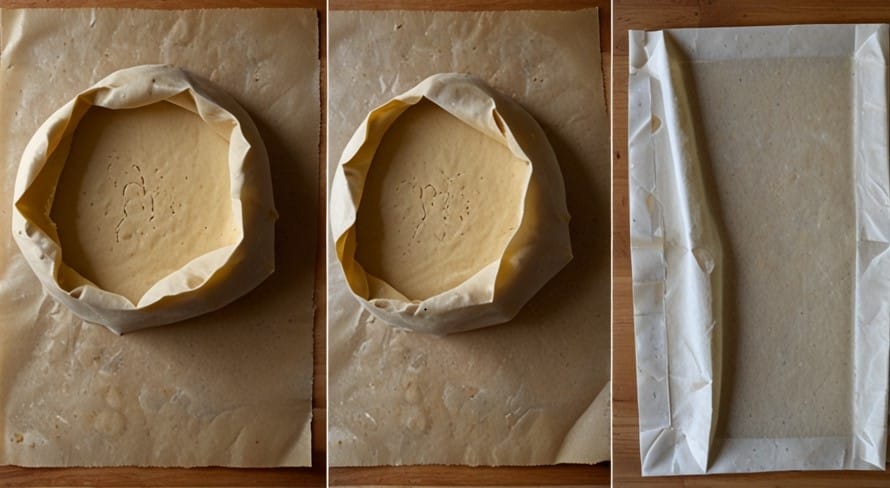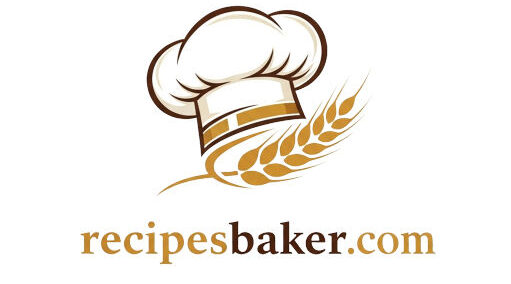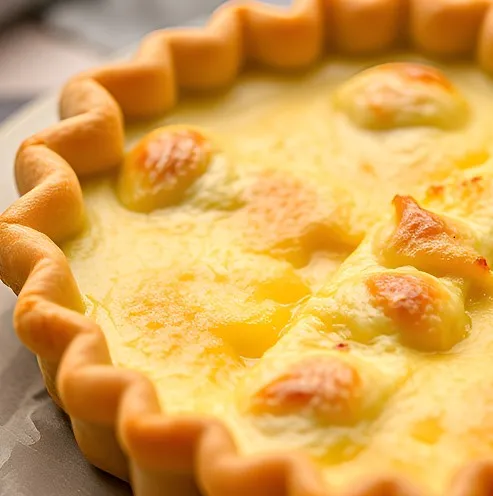Table of Contents
Gluten free pastry has revolutionized baking for those avoiding gluten due to dietary Gluten free pastry is a game changer for those who need or choose to avoid gluten. Whether you’re making flaky pies, buttery tarts, or delicate puff pastries, mastering gluten free pastry opens up a world of baking possibilities. This guide is packed with tips, recipes, and techniques to help you create delicious gluten free pastry at home. With the right flours, binding agents, and preparation methods, you can achieve results that rival traditional pastries. Ready to dive in? Let’s explore how to make the best gluten free pastry from scratch
What Are Gluten Free Pastries?
Understanding Gluten Free Pastry
Gluten-free pastry refers to any pastry made without wheat, barley, or rye, which all contain gluten. Instead, alternative flours like almond, rice, or tapioca are used to create delicious and safe options for those with celiac disease or gluten sensitivity. The absence of gluten in these pastries means they require different techniques, but the results can still be flaky, tender, and full of flavor.
Popular Types of Gluten Free Pastries
- Gluten Free Puff Pastry: A versatile option for both sweet and savory recipes.
- Gluten Free Shortcrust Pastry: Ideal for pies, quiches, and tarts.
- Filo Pastry Alternatives: Made with rice flour or starch for layering delicacies.
- Pastry Shells: Perfect bases for gluten free desserts.
The Benefits of Gluten Free Pastry
Not only is gluten free pastry suitable for those with gluten-related conditions, but it also offers unique flavors and textures thanks to alternative flours. For instance, almond flour provides a nutty richness, while coconut flour adds a subtle sweetness. These pastries are also often more nutrient-dense than their wheat-based counterparts.
Popular Types of Gluten Free Pastries
- Puff Pastry: A buttery, flaky delight used for sweet or savory dishes.
- Shortcrust Pastry: Perfect for pies and tarts with a crumbly texture.
- Filo Pastry: Thin, delicate layers used for dishes like baklava or spanakopita.
- Pastry Shells: Excellent for mini quiches, fruit tarts, or custard-filled desserts.
The Benefits of Gluten Free Pastries
Going gluten-free isn’t just about avoiding gluten—it’s about opening up a world of new possibilities. Gluten-free pastries can offer:
- Unique Flavors: Flours like almond or coconut bring rich, nutty notes.
- Healthier Options: Many gluten-free flours are nutrient-rich and lower in carbs.
- Inclusivity: Ideal for those with dietary restrictions, making gatherings more enjoyable for everyone.
Why Gluten Free Pastries Are Growing in Popularity
As more people embrace gluten-free lifestyles, the demand for high-quality gluten-free pastries has skyrocketed. With the right ingredients and techniques, these pastries can rival—and sometimes surpass—their gluten-filled counterparts in taste and texture.
Stay tuned as we delve deeper into the world of gluten-free baking, starting with the best flours to use for your creations!
Is Gluten-Free Pastry Any Good?
Taste and Texture of Gluten-Free Pastry
One of the biggest concerns for anyone new to gluten-free baking is whether the taste and texture can match traditional pastries. The answer? Absolutely! While gluten-free pastries may lack the elasticity provided by gluten, with the right combination of flours and techniques, you can achieve a pastry that is flaky, tender, and full of flavor. Many bakers even find that gluten-free options offer unique textures and richer flavors due to the variety of flours available.
Comparing Gluten Free Pastry to Traditional Pastry
- Texture: Gluten free pastry tends to be more delicate but can be just as satisfying.
- Taste: Ingredients like almond and coconut flour add nutty, sweet undertones, making gluten free pastries a hit for desserts.
- Preparation: While the dough can be slightly trickier to handle, proper chilling and careful rolling ensure great results.
Common Misconceptions About Gluten Free Pastry
- “It’s Always Crumbly”: Using binders like xanthan gum or psyllium husk can prevent crumbly dough.
- “It’s Bland”: Gluten free flours often have richer, distinct flavors compared to all-purpose flour.
- “It’s Too Complicated”: By following simple techniques and recipes, gluten free pastry can be just as easy to prepare.
Gluten free pastries are not only “good,” but they also open the door to experimenting with a wide range of flavors and textures that you might never have considered with traditional pastries.
How to Make Gluten-Free Pastry (Step-by-Step Guide)
Ingredients You’ll Need
Before you start, gather these essential ingredients:
- 2 ½ cups gluten free flour blend (choose a mix with xanthan gum or add 1 tsp separately).
- 1 cup unsalted butter (or dairy-free alternative), cold and cubed.
- 6-8 tablespoons ice water.
- 1 teaspoon salt (optional, for savory pastries).
Step-by-Step Instructions
- Combine Dry Ingredients: In a large bowl, mix the gluten-free flour blend and salt. If your flour doesn’t contain xanthan gum, add 1 teaspoon at this stage.
- Cut in the Butter: Add cold, cubed butter to the flour mixture. Use a pastry cutter or your fingers to blend until the mixture resembles coarse crumbs.
- Add Ice Water: Gradually add ice water, one tablespoon at a time, mixing gently after each addition. Stop once the dough holds together but isn’t sticky.
- Chill the Dough: Wrap the dough in plastic wrap and refrigerate for at least 30 minutes to firm up. This step is crucial for easier rolling.
- Roll Out the Dough: Place the chilled dough between two sheets of parchment paper and roll it out to the desired thickness.
- Bake: Transfer the dough to a pie dish or baking tray, fill as desired, and bake according to your recipe’s instructions.
Tips for Rolling and Baking Gluten Free Pastry
- Work Quickly: Cold dough is easier to handle.
- Use Parchment Paper: It prevents sticking and makes transferring the dough a breeze.
- Don’t Overwork the Dough: Handle the dough gently to avoid a tough texture.
Troubleshooting Common Issues
- Dough Cracks When Rolling: Add a little more water or knead lightly to bring it together.
- Pastry Shrinks in the Oven: Chill the dough again after shaping and before baking.
- Texture Feels Gritty: Try a finer gluten-free flour blend.
Mastering gluten free pastry requires patience, but the results are worth it. Once you’ve nailed the process, you’ll have a go-to recipe for everything from pies to tarts and beyond!
Popular gluten free Pastry Recipes
Classic Gluten Free Pie Crust Recipe
Ingredients:
- 2 ½ cups gluten free flour blend
- 1 cup cold unsalted butter (or vegan substitute)
- 6-8 tbsp ice water
- 1 tsp salt (optional)
Instructions:
- Mix the gluten free flour and salt in a bowl.
- Cut in the butter until the mixture resembles coarse crumbs.
- Gradually add ice water, mixing gently until the dough holds together.
- Wrap the dough in plastic and refrigerate for at least 30 minutes.
- Roll out between parchment paper, transfer to a pie dish, and bake as needed.
Flaky Gluten Free Puff Pastry
Ingredients:
- 2 ½ cups gluten-free flour blend
- 1 cup cold butter, sliced into thin slabs
- ½ cup cold water
- 1 tsp xanthan gum
Instructions:
- Mix the flour and xanthan gum in a bowl.
- Incorporate butter slices, flattening them into the flour with your fingers.
- Add water and gently form a dough without overmixing.
- Roll out the dough, fold it into thirds, and repeat three times. Chill between folds.
- Use for savory or sweet recipes.
Easy Gluten Free Tart Shells
Ingredients:
- 1 ½ cups almond flour
- ½ cup coconut flour
- ½ cup cold butter or vegan substitute
- 2 tbsp honey (for sweet tarts)
Instructions:
- Combine almond and coconut flours in a bowl.
- Cut in the butter until crumbly.
- Add honey if making a sweet tart. Press the dough into tart pans and bake at 350°F (175°C) for 10-12 minutes.
These recipes showcase the versatility of gluten free pastry. Whether it’s a savory quiche or a fruity tart, gluten-free doughs are ready to shine!

Common Challenges When Making Gluten Free Pastry
Dough Crumbling or Falling Apart
One of the most common issues with gluten-free pastry is crumbling dough. Without gluten, the dough lacks the elasticity needed to hold together.
Solutions:
- Add xanthan gum or psyllium husk to improve binding.
- Use cold butter and ice water to maintain structure.
Lack of Flakiness
Achieving the layers associated with puff pastry can be tricky. Gluten free flours often absorb more moisture, leading to denser results.
Solutions:
- Use a blend of almond and rice flours for a light texture.
- Ensure your butter stays cold during preparation.
Pastry Not Holding Shape
Gluten free dough tends to spread or collapse during baking. This is often due to insufficient chilling or overworked dough.
Solutions:
- Chill the dough after rolling and shaping.
- Handle the dough gently to avoid activating the starches excessively.
Tips for Avoiding Common Problems
- Use Parchment Paper: It prevents sticking and tearing during rolling.
- Incorporate Binding Agents: Xanthan gum or chia seeds can work wonders.
- Don’t Overhydrate: Add water sparingly to prevent sticky dough.
Making gluten free pastry can feel like trial and error, but persistence pays off. With each attempt, you’ll gain confidence and learn how to adjust your techniques for flawless results.
FAQ Section (450 words)
What Kind of Pastries Are Gluten Free?
Many traditional pastries can be adapted into gluten-free versions using alternative flours and binders. Popular gluten-free options include:
- Pies and Tarts: Made with almond, coconut, or rice flour.
- Puff Pastry: Achieved with a gluten-free flour blend and careful layering techniques.
- Shortcrust Pastry: Perfect for quiches or sweet desserts.
- Choux Pastry: Adapted with fine gluten-free flour for éclairs or profiteroles.
These adaptations ensure that everyone, regardless of dietary restrictions, can enjoy their favorite pastries.
Which Gluten Free Flour Is Best for Pastry?
There isn’t a one-size-fits-all answer, but some of the best gluten-free flours for pastry include:
- Almond Flour: Rich, nutty flavor perfect for desserts.
- Rice Flour: Light and versatile for various pastry types.
- Tapioca Flour: Adds elasticity to gluten-free doughs.
- Coconut Flour: Adds a subtle sweetness and pairs well in pies and tarts.
For the best results, combine multiple flours to balance flavor, texture, and moisture.
Is gluten free pastry Any Good?
Absolutely! Gluten-free pastry can be just as delicious as traditional pastry when prepared correctly. By using high-quality flours and following proper techniques, you can achieve flaky, tender results that rival any wheat-based alternative.
Is There Gluten in Pastry?
Traditional pastries are made with wheat flour, which contains gluten. However, gluten-free pastries use alternative flours like almond, rice, or coconut, making them safe for individuals with celiac disease or gluten sensitivity.
Expert Tips for Perfect Gluten Free Pastries
Invest in the Right Tools
Using proper tools makes gluten-free pastry making much easier:
- Non-Stick Rolling Pin: Prevents sticking and tearing during rolling.
- Parchment Paper: Ideal for rolling and transferring delicate dough.
- Dough Cutter or Bench Scraper: Helps manage fragile dough.
Work in a Cool Environment
Temperature control is crucial for gluten free baking. A warm kitchen can soften the butter too quickly, resulting in sticky dough. Work in a cool space and chill the dough frequently during preparation.
Use Binding Agents
Binding agents like xanthan gum, guar gum, or psyllium husk are essential for improving the structure and elasticity of gluten free dough. They mimic the properties of gluten and help the dough hold together.
Chill the Dough
Refrigerating the dough at various stages ensures:
- Better handling and rolling.
- Reduced risk of tearing.
- A flakier final product.
Avoid Overworking the Dough
Gluten free dough can become crumbly or tough if handled too much. Mix and roll just enough to combine the ingredients and form the desired shape.
Experiment with Flour Blends
Different gluten free recipes require specific flour blends. Experimenting with combinations (e.g., almond + tapioca or rice + coconut) can yield excellent results tailored to your pastry type.
Mastering these tips will take your gluten free pastry to the next level, ensuring they’re flaky, flavorful, and perfectly crafted every time!
Gluten Free Pastry and Health Benefits
Lower in Carbohydrates
Many gluten-free flours, such as almond and coconut, are naturally lower in carbohydrates compared to wheat flour. This makes gluten-free pastries a better option for those watching their carb intake or managing conditions like diabetes.
Rich in Nutrients
Gluten free flours are often packed with nutrients:
- Almond Flour: High in protein, healthy fats, and Vitamin E.
- Coconut Flour: A good source of fiber and medium-chain triglycerides (MCTs), which boost energy.
- Buckwheat Flour: Rich in antioxidants and minerals like magnesium and zinc.
These nutrient-dense flours make gluten-free pastries a healthier choice without sacrificing flavor.
Safe for Celiac Disease and Gluten Sensitivity
For individuals with celiac disease or non-celiac gluten sensitivity, gluten-free pastries eliminate the risk of harmful reactions. Avoiding gluten can reduce inflammation, improve digestion, and support overall health for those with gluten-related issues.
Potential Downsides to Watch For
While gluten-free pastries offer health benefits, it’s important to be mindful of the following:
- Calorie Density: Flours like almond can be higher in calories.
- Processing: Some store-bought gluten-free mixes may contain added sugars or preservatives.
Choose natural, minimally processed flours to maximize the benefits of gluten-free pastries.
Whether you’re avoiding gluten for health reasons or exploring its benefits, gluten-free pastry provides a flavorful and nourishing alternative to traditional baked goods. Discover great tips for gluten free baking success.”
Conclusion and Next Steps
Gluten-free pastry doesn’t have to feel like a compromise. With the right ingredients, techniques, and recipes, you can create pastries that are just as delicious, flaky, and versatile as their gluten-based counterparts. From savory pies to sweet tarts, the possibilities are endless when you embrace the art of gluten-free baking.
As you’ve learned in this guide, the key to success lies in:
- Choosing the best gluten-free flour blends.
- Incorporating binding agents like xanthan gum.
- Following tried-and-true recipes for perfect results.
With practice, you’ll become confident in handling gluten-free dough, troubleshooting common issues, and experimenting with new recipes. Whether you’re a seasoned baker or a beginner, gluten-free pastry is a rewarding skill that opens up a world of culinary possibilities.
Ready to get started? Explore more recipes, tips, and inspiration at RecipesBaker.com.

